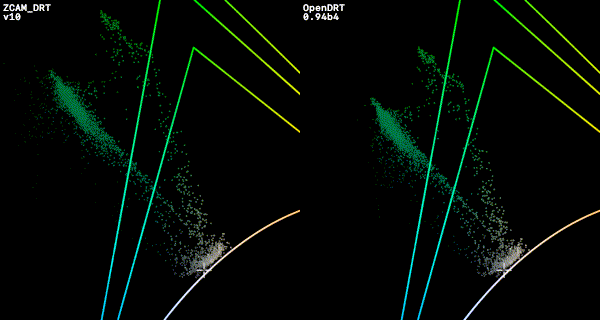Yeah, my read on it is that what we’re seeing here in the clamp variations is in fact a “skew”. Both “Perceptual Hue Preserving” or “Chromaticity Angle Preserving” approaches would show similar results to what we see with ZCAM in this situation.
The plot below winds on the compression used by ZCAM DRT (1.0 → 1.2) and OpenDRT (clamp mixed from 0 → 1.0)
